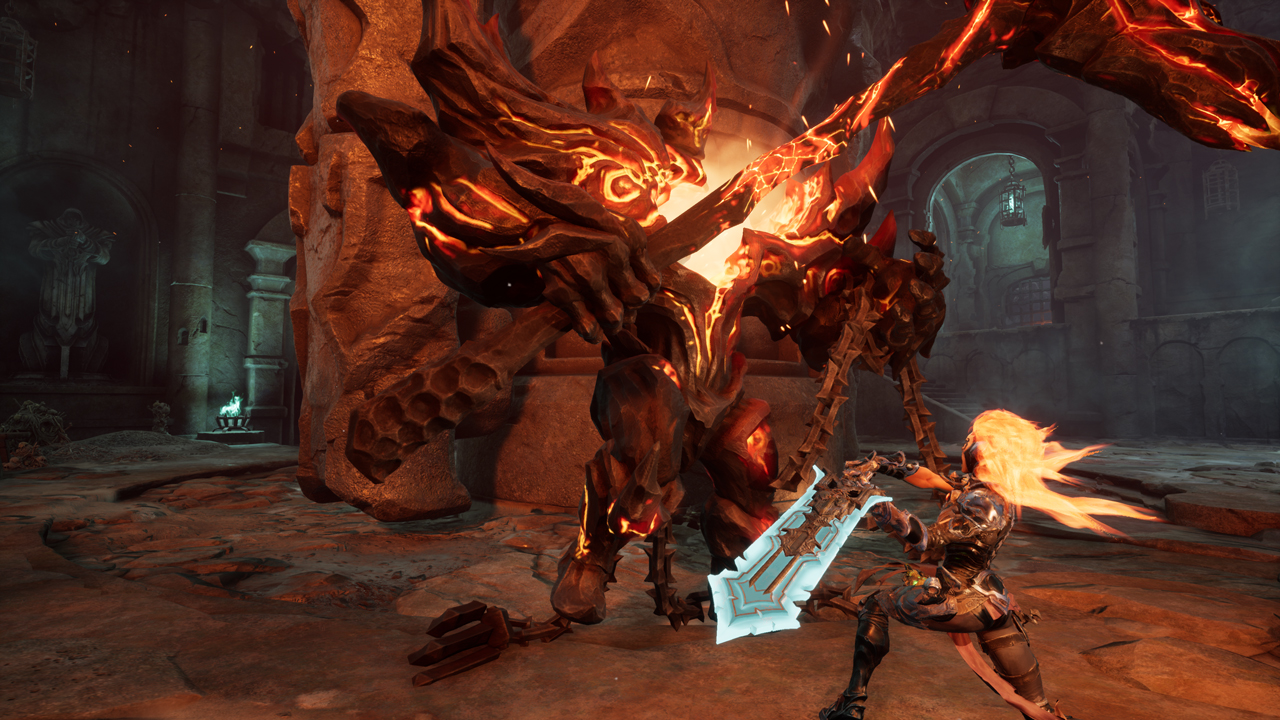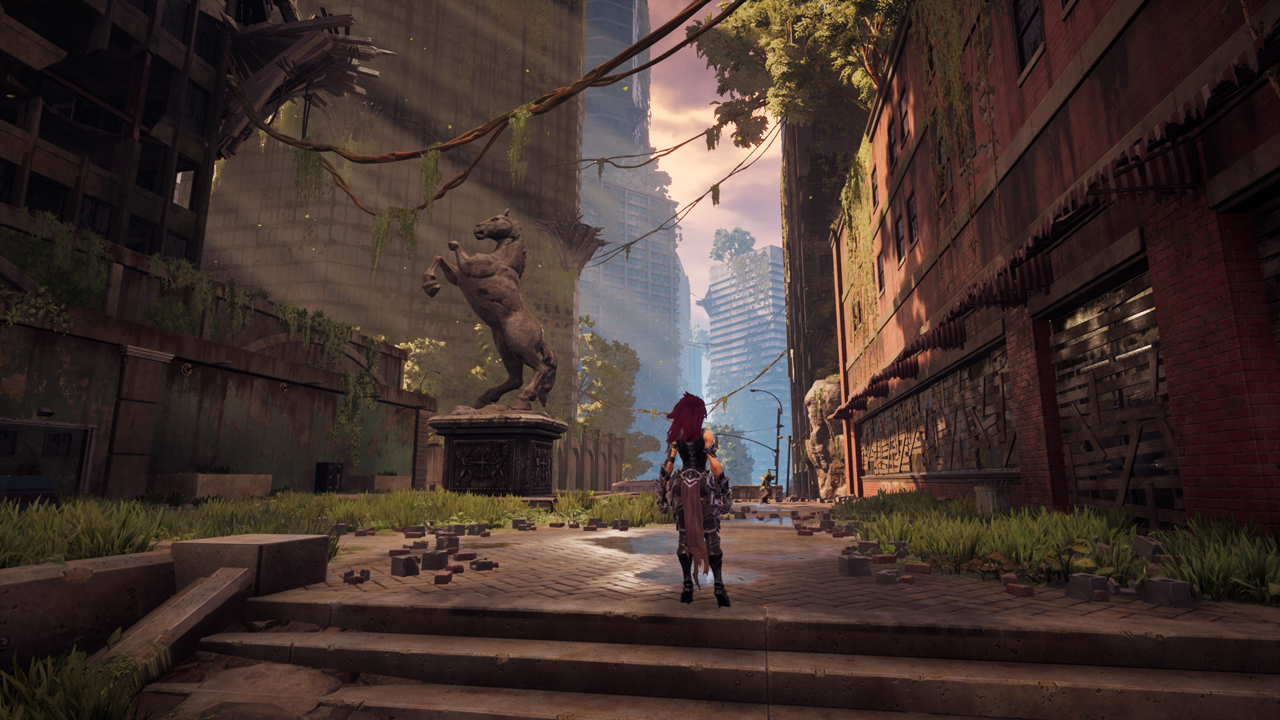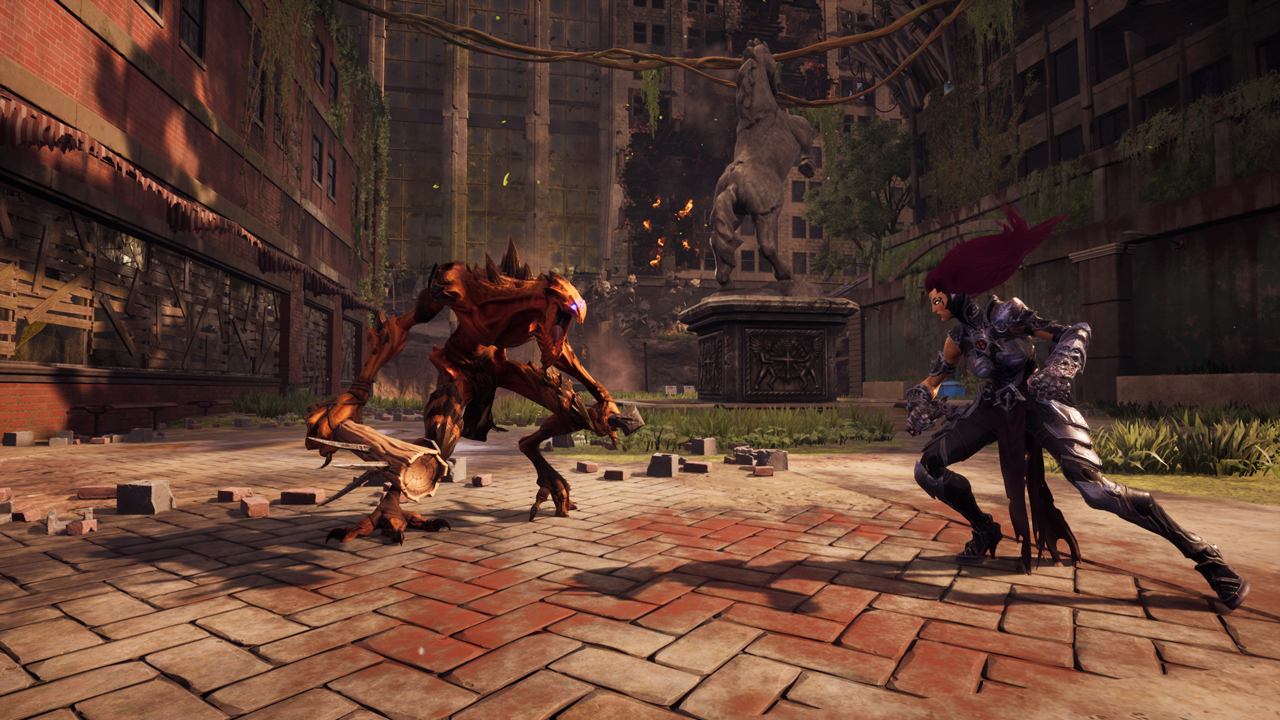About the stages of level development for the upcoming Darksiders III in an interview App2Top.ru the director of design of the project John Pearl (John Pearl) from Gunfire Games told.

John PearlAlexander Semenov, Senior Editor App2Top.ru : Hello!
Tell me a little about yourself first. What is your role on the project and what did you do before?
John Pearl: I’m the design director at Gunfire Games. I used to be the director of technical art at Darksiders II and the lead environment artist at Darksiders I.
Before you started developing Darksiders III, did you have any vision of what type of levels should be in the new part, and which ones would look superfluous?
John: In the previous games of the series, we formulated a certain number of images and concepts. And in the new part we returned to them.
If we talk about design, Darksiders II was a little more open from the point of view of the world, since its history took place in unexplored areas. As for the action of Darksiders I, it took place mainly on Earth.
Darksiders III also takes place on Earth. And as part of the design, we also wanted to return to the ideas familiar to the players, to reveal those things that we think were the most successful. At the same time, we wanted to add new things to the design to make the game feel fresh and original.
The Darksiders III team has a list of what things must necessarily be at each level, and which ones should not be added at all?
John: If we don’t go into details, we always try to create memorable moments that would freeze the blood. I’m talking about a unique experience that stays with the gamer long after the game.
 Let’s talk about development in a more substantive way. How do you prepare to create each level?
Let’s talk about development in a more substantive way. How do you prepare to create each level?
John: Most of the ideas concerning game levels start with key sketches. Just one sketch can be a source of a huge number of ideas for a level.
At the initial stage, the level is often just a sketch on paper or even an ordinary white board. This allows you to quickly try different options and also receive feedback promptly. As a rule, at this stage the level has time to change several times before we go further.
After you have decided that you need such and such a level in such and such a style, what is the first stage of direct work on it?
John: This is usually the part of development that can be called “high-level brainstorming”. As a rule, it just involves creating a level sequence on paper or moving from one sketch of the room to another to get an idea of how dynamic the level will be.
Work at this stage can take place both on paper and on the engine. In the latter case, the level will be composed of primitives.
At this stage, we need to get a sense of space and understand how it interacts with the scene. Yes, if there are plot sections or moments on the level concerning changes in the game rhythm, we usually need to take into account the required place for them.
 You brought up the subject of primitives. As far as I know, the fact that the first versions of the level are made from them is an industry standard. But how difficult is this stage and how many iterations are required for the level to be accepted?
You brought up the subject of primitives. As far as I know, the fact that the first versions of the level are made from them is an industry standard. But how difficult is this stage and how many iterations are required for the level to be accepted?
John: Inside the studio, we call it the blueroom stage. Within its framework, we are trying to determine the structure of the level. The stage allows us to figure out how the rooms and levels are connected to each other.
The main task at this stage is to make sure that then there will be no major alterations in the size of the level and the distances on it.
This stage requires a lot of iterations, as we try to set how the player’s character will move on the level and what abilities to use. When it turns out to form several sequences of passing a level, and we determine its parameters, work on the level accelerates.
By the way, how do you understand that everything is fine with the level?
John: This is usually found out by repeated passage. If something is wrong, it becomes obvious after a few playthroughs. Sometimes it takes someone with a fresh look to pass a level. The internal playtest is very important at this stage.
So, the level of primitives is ready. What’s next?
John: After scrupulous testing, we pass the level to the artists in the environment so that they make a so-called shell pass. This is the stage at which they figure out which assets will become the basis of the level. We are talking about creating floors, walls and other things from which the level will be assembled. At this stage, it can be said, the fastening forest, the first decorations are exposed. Here the task is given to consolidate the level space and form its basic image.
 If, in general, we talk about further visualization of the level, then how many more stages does it have in total? And what difficulties do you usually face at the same time?
If, in general, we talk about further visualization of the level, then how many more stages does it have in total? And what difficulties do you usually face at the same time?
John: The number of further stages can vary greatly. Moreover, they are difficult to separate from each other. After the level of primitives is accepted, designers and artists constantly pass it to each other. This is a lot of work, which leads to the completion of the level.
It is clear that the designer must take into account all the game mechanics. But how often are the mechanics themselves implemented based on the decisions of level designers?
John: It often happens this way and that way. As a rule, mechanics are planned at the pre-development stage, but you never know how they will work until you test them on a real level. Also, their functionality may vary depending on how they behave at the levels. Plus, as soon as the levels come into operation, we often add new mechanics if we find that the player lacks them.
Pacing is critically important for action-adventure games. How to build the right balance between puzzles, exploration and battles so that players are satisfied?
John: Most of the time we plan something, then implement it, play it, and then repeat, repeat, repeat. The only “silver bullet” here is to replay the gameplay over and over again from the earliest stage of development. The sooner you make the game work, the sooner you will be able to detect problems and the sooner you will find a solution to them.
In recent years, the levels of action-adventure in terms of working on the environment have become more difficult. They are getting closer to the locations of sandboxes and role-playing games (for example, these are the levels of the latest God of War and Tomb Raider). How correct is this for the genre? Doesn’t this blur its boundaries?
John: I think it’s a natural course of things in games when traditional genres are mixed. And action-adventure is no exception here. Now it has more focus on characteristics, progression, and character development. It seems to me that thanks to this, the genre has become more integral and vivid.
Are  players ready today for simple levels with less emphasis on the environment (that is, would The Legend of Zelda: Ocarina of Time, whose architecture is ingenious but minimalistic, come in today)?
players ready today for simple levels with less emphasis on the environment (that is, would The Legend of Zelda: Ocarina of Time, whose architecture is ingenious but minimalistic, come in today)?
John: Good game design can stand the test of time. That’s where the hype around the retro NES-mini and SNES-mini consoles comes from. Part of the reason is nostalgia, but we must admit that many old Nintendo games are still fascinating.
Would The Legend of Zelda: Ocarina of Time have been a hit if it had been released today — a slightly more difficult question. The fact is that if the game had not been released in due time, it would not have been able to inspire many other titles. And if someone made a game similar to it today, but at the same time Ocarina would already exist, then I think it would be successful, but certainly not revolutionary.
The last question brings us back to Darksiders III. What should your industry colleagues expect from the levels of the game?
John: I hope they will like the level of elaboration that we will offer and the complex world that we have created.
